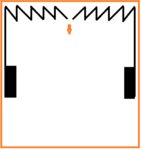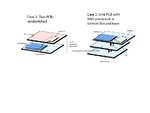Sherry1
Member level 3

- Joined
- Apr 4, 2013
- Messages
- 61
- Helped
- 0
- Reputation
- 0
- Reaction score
- 0
- Trophy points
- 1,286
- Location
- Manchester, UK
- Activity points
- 1,810
Hi
I am considering a commercial product multi-band GSM ceramic chip SMT patch antenna with dimensions of 20x7x3mm. To mount it on my PCB i need to provide a Ground plane for it. Now it is suggested that antenna's Ground Plane (GNP) should be roughly λ/4 which means for a minimum GSM frequency of 890MHz in EU ( especially in UK) , the Ground plane should have a dimension of 80mm. This is too large . The project I am working on is space limited and I can accommodate whole of PCB design within 45x30mm size.
Can anybody tell me how can I minimize the GNP size ? Can this antenna share the common ground plane of the PCB ( in this PCB other chips are also placed of course) ?
I realize that once a suitable efficiency is achieved for this lowest frequency , the higher GSM frequencies (900/1800 MHz) will not have a problem for this antenna.
I am considering a commercial product multi-band GSM ceramic chip SMT patch antenna with dimensions of 20x7x3mm. To mount it on my PCB i need to provide a Ground plane for it. Now it is suggested that antenna's Ground Plane (GNP) should be roughly λ/4 which means for a minimum GSM frequency of 890MHz in EU ( especially in UK) , the Ground plane should have a dimension of 80mm. This is too large . The project I am working on is space limited and I can accommodate whole of PCB design within 45x30mm size.
Can anybody tell me how can I minimize the GNP size ? Can this antenna share the common ground plane of the PCB ( in this PCB other chips are also placed of course) ?
I realize that once a suitable efficiency is achieved for this lowest frequency , the higher GSM frequencies (900/1800 MHz) will not have a problem for this antenna.
Last edited:




